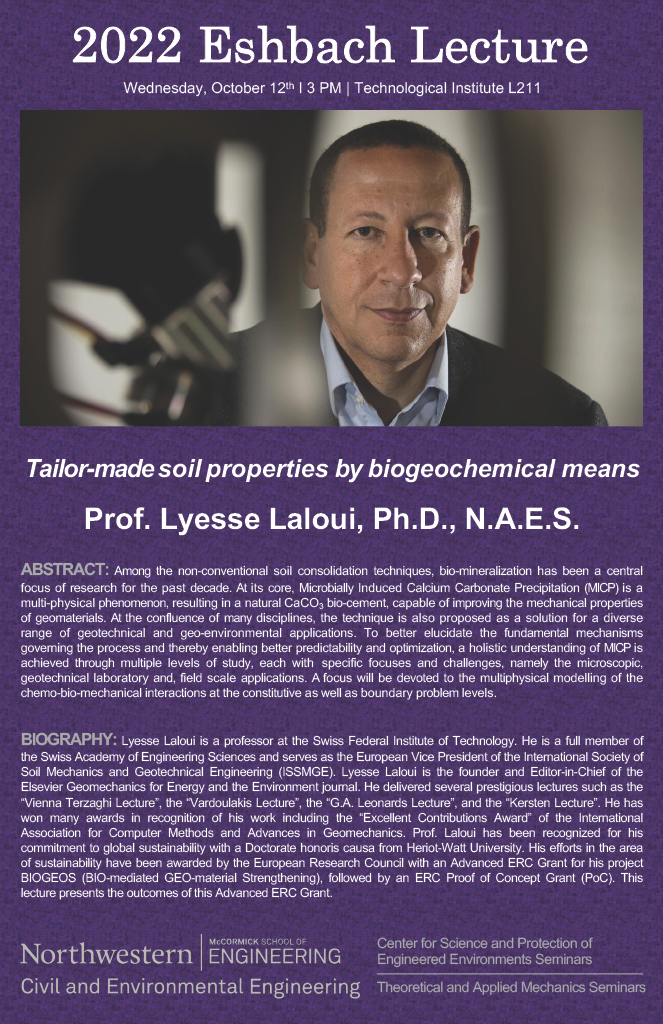

ABSTRACT: Among the non-conventional soil consolidation techniques, bio-mineralization has been a central focus of research for the past decade. At its core, Microbially Induced Calcium Carbonate Precipitation (MICP) is a multi-physical phenomenon, resulting in a natural CaCO3 bio-cement, capable of improving the mechanical properties of geomaterials. At the confluence of many disciplines, the technique is also proposed as a solution for a diverse range of geotechnical and geo-environmental applications. To better elucidate the fundamental mechanisms governing the process and thereby enabling better predictability and optimization, a holistic understanding of MICP is achieved through multiple levels of study, each with specific focuses and challenges, namely the microscopic, geotechnical laboratory and, field scale applications. A focus will be devoted to the multiphysical modelling of the chemo-bio-mechanical interactions at the constitutive as well as boundary problem levels.
BIOGRAPHY: Lyesse Laloui is a professor at the Swiss Federal Institute of Technology. He is a full member of the Swiss Academy of Engineering Sciences and serves as the European Vice President of the International Society of Soil Mechanics and Geotechnical Engineering (ISSMGE). Lyesse Laloui is the founder and Editor-in-Chief of the Elsevier Geomechanics for Energy and the Environment journal. He delivered several prestigious lectures such as the “Vienna Terzaghi Lecture”, the “Vardoulakis Lecture”, the “G.A. Leonards Lecture”, and the “Kersten Lecture”. He has won many awards in recognition of his work including the “Excellent Contributions Award” of the International Association for Computer Methods and Advances in Geomechanics. Prof. Laloui has been recognized for his commitment to global sustainability with a Doctorate honoris causa from Heriot-Watt University. His efforts in the area of sustainability have been awarded by the European Research Council with an Advanced ERC Grant for his project BIOGEOS (BIO-mediated GEO-material Strengthening), followed by an ERC Proof of Concept Grant (PoC). This lecture presents the outcomes of this Advanced ERC Grant.